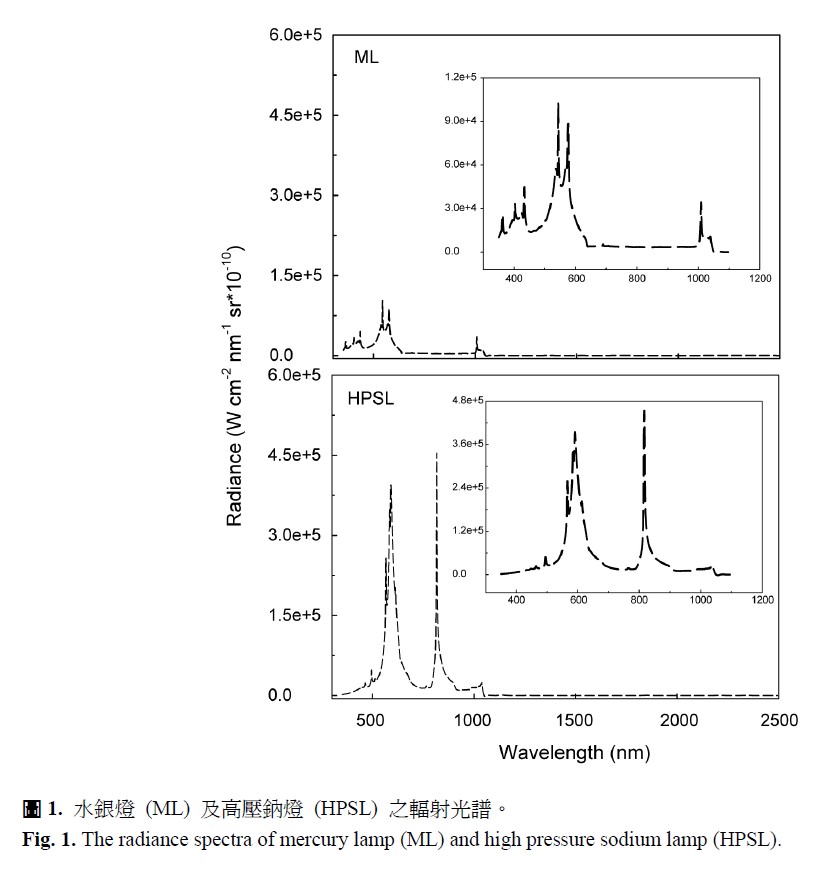All issues
Author:Yuh-Jyuan Lee, Chwen-Ming Yang*, and Chiao-Ling Hsiao
Abstract:
Field experiments were conducted at the experimental farm of Taiwan Agricultural Research Institute, Wufeng, Taichung, Taiwan to determine effects of night illumination on growth, development and yield of rice, using a light-sensitive cultivar TK 11 and a light-insensitive cultivar TK 2. The two lighting treatments were further divided into two subtreatments: (a) lighting for 2-h (from 23 : 30 to 01 : 30) and (b) lighting for 1-h (from 23 : 30 to 00 : 30). Both mercury lamp (ML) and high pressure sodium lamp (HPSL) were chosen as light sources for the treatment. Values of photosynthetic photon flux density (PPFD) measured above rice canopies of TK 2 and TK 11 were in proportion to the reverse law of squares, and the values of light intensity were higher in HPSL than in ML. Compared to the control (no light illumination), plant height was not significantly affected by night illumination of ML and HPSL, but the light treatments significantly increased leaf number and leaf area and thereby, increased the fresh weight and dry weight of rice leaves and culms. The effects of growth promotion were more prominent for plants closer to the light source, plants treated with 2-h night illumination (compared to 1-h night illumination), and light source from ML (compared to light source from HPSL). Night illumination prolonged growth of rice plants for both of transplanting to 50% heading and 50% heading to harvest, and this growth promotion phenomenon was more prominent for plants closer to the light source due to increase in light intensity. For the light sensitive variety TK 11, both fresh weight and dry weight of panicles were greatly reduced due to reduction of productive tillers and increased of empty grains. The reduction of fresh and dry weights of TK 11 in 2-h night illumination was higher than in 1-h night illumination, and it was also higher in HPSL treatment than in ML treatment. Compared to TK 11, the effect of night illumination on panicle weights and harvest index of the light insensitive variety TK 2 was less obvious, and the contributing factors for yield reduction were percentage of filled grains and 1000-grain weight, not percentage of effective tillers.
Key words:Night illumination, Dark period light interruption, Period of light treatment, Rice, Oryza sativa, Growth and development, Yield
Download:![]() PDF Links
PDF Links
- 1. Using Digital Soil Mapping to Predict Soil Organic Carbon Stocks in Zhuoshui River Basin
- 2. Taxonomic Review of the Genus Asiophrida Medvedev, 1999 in Taiwan (Insecta: Coleoptera: Chrysomelidae: Galerucinae: Alticini), with Notes on Biology
- 3. Development of a Technique for Forecasting (or Pre-Detection) Anthracnose Disease Incidences of Green Mature Bagging Mango Fruits

 Submit your manuscript
Submit your manuscript
 Guide for authors
Guide for authors